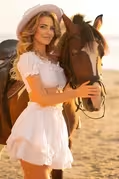Cuando se usa love y like
Brides club- Dating tips author

Lecciones Esenciales de Inglés para Principiantes. Kenneth Beare has taught English and English as a second language teacher since 1983. Este uso del verbo ‘Like’ cuando se usa love y like para preferencias generales. Like’ es usado como preposición para expresarse sobre una apariencia física.
En este caso, ‘like’ también puede significar ‘similar to’ si está haciendo comparaciones con otras personas. What would you like to drink? Otro uso común de ‘like’ es un ‘would like’ para expresar deseos. Note que ‘would like’ es seguido por la forma en infinitivo del verbo y no por la forma ‘-ing’. Pruebe su conocimiento con esta breve prueba. How Do You Use “Like” in English? For this reason, some items on this page will be unavailable.
For more information about this message, please visit this page: About CDC. Who is at risk for getting head lice? What do head lice look like? Where are head lice commonly found?
What are the signs and symptoms of head lice infestation? How did my child get head lice? How is a head lice infestation diagnosed? How is a head lice infestation treated?
Is infestation with head lice reportable to health departments? I don’t like my school’s head lice policy, can CDC do something? Can head lice be spread by sharing sports helmets and headphones? Can wigs or hair pieces spread lice? The head louse, or Pediculus humanus capitis, is a parasitic insect that can be found on the head, eyebrows, and eyelashes of people. Head lice feed on human blood several times a day and live close to the human scalp. Head lice are not known to spread disease.
In the United States, infestation with head lice is most common among pre-school children attending child care, elementary schoolchildren, and the household members of infested children. Although reliable data on how many people in the United States get head lice each year are not available, an estimated 6 million to 12 million infestations occur each year in the United States among children 3 to 11 years of age. Head lice are spread by direct contact with the hair of an infested person. Anyone who comes in head-to-head contact with someone who already has head lice is at greatest risk. Personal hygiene or cleanliness in the home or school has nothing to do with getting head lice. Actual size of the three lice forms compared to a penny.
Illustration of egg on a hair shaft. Nit: Nits are lice eggs laid by the adult female head louse at the base of the hair shaft nearest the scalp. Nits often appear yellow or white although live nits sometimes appear to be the same color as the hair of the infested person. Nits are often confused with dandruff, scabs, or hair spray droplets. Nymph: A nymph is an immature louse that hatches from the nit.
Russian brides club
Russian Brides
Dating Posts
- I love us 9
- Love us 8 cent stamp
- I love us 8 episode
- Russian dating Boston
- Russian brides Boston
- Russian dating in Los-Angeles CA
- Russian brides in United Kingdom
- Russian brides for marriage
Recent Posts
Categories
Need Help?
Contact Us Toll-Free


